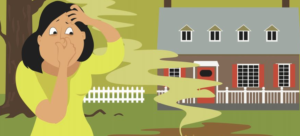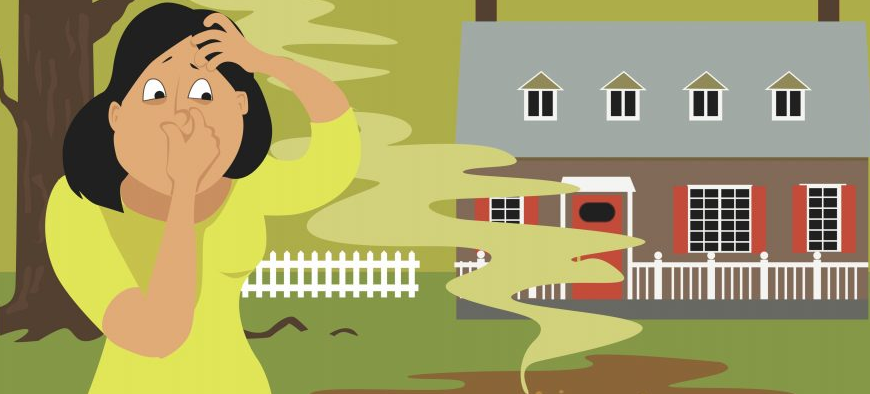
Smell Affecting the Sell?
Retailers and hoteliers have exploited our sense of smell for years and even cinemas have tried (unsuccessfully) to introduce smell-o-vision. Traditionally people selling houses have tried baking bread or making coffee to make the home more appealing but does this actually work or are we all just far too sophisticated to fall for such cheap tricks.
A recent piece in the Daily Telegraph suggested that having the right ambient smells (such as Jasmine in the bedroom) can really enhance the sale of your home, but can it? We asked our Shona Gilmour whether having pleasant smells waft around your home can really help achieve the top price.
Q Does the smell affect the sell?
That’s a question more for a psychologist than me(!) but anecdotally I would say that we use all our senses when making decisions in life and smell is a big one of those. Often we are looking for things that could indicate a fault in home so the smell of damp or sewerage would be a big negative. Equally smells that make us feel immediately at home in a property will be a positive.
Q What smells do you think work best?
Whether we realise it or not we all have our own smells and household smells which will be affected by the food we cook and eat however as a basic you want the house to smell clean (although not too much like we’ve just poured a gallon of bleach down the toilet. Also the smell of a well used kitchen has a fine line. Nice rich coffee or recently baked bread/cake can be welcoming but you don’t want it to seem too forced or over powering…you don’t want people thinking it’s there to mask a problem.
Q Bad smells must be a very hard sell? How much can living in a smelly area impact on your price?
Absolutely. Unfortunately someone has to live close to a sewage works or landfill site but that will have an impact on price – eventually a house price can be reduced to compensate for an issue.
Q Could potential buyers be put off if you choose the wrong scent?
I recall going out to a home once where the occupants asked me “ what’s this modern fad for having bathrooms real of bleach?” to which (having just been around their home) I thought “better than smelling like a gents public toilet!” No-one wants a smell that leads them to believe there’s an issue on their home or just makes them want to leave the house quickly. So try to avoid that strong smelling cheese soup you love or cooking too much fish when you’re selling the home.
So what are Shona’s top smell tips? Here’s her eight;
1. Purify the air with houseplants.
In 1989, NASA studied how to clean air in space stations. Scientists identified 15 houseplants that serve as natural air filters. In 2009, a research team from Penn State University in America studied the effects of plants on indoor air quality. Both NASA and PSU confirmed that houseplants neutralize air pollutants. They also clean the air by absorbing carbon dioxide and emitting oxygen. Following are 10 indoor plants from both studies that will freshen the air in your home:
-Aloe vera
-Chinese evergreen
-English ivy
-Cornstalk dracaena
-Red-edged dracaena
-Golden pothos
-Peace lily
-Rubber plant
-Snake plant
-Spider plant
NASA recommends using at least one plant per 100 square feet of home space. For maximal air-cleaning power, containers should be at least 6 inches in diameter.
2. Try a a light bulb ring.
A light bulb ring is a small metal or ceramic device that rests on top of a light bulb. The well of the ring is a reservoir for essential oil. Add three drops of essential oil to the well. Now, switch on your light and enjoy the magic! The warmth of the light bulb will disperse the scent.
Use light bulbs of 60 watts or less. Always fill the well with the light bulb cold and the lamp switch off. Avoid dropping the oil directly onto the bulb.
3. Ditch odors with a diffuser.
Don’t spend money on expensive retail diffusers, you can create your own at low cost. You’ll need:
-8 wooden reed skewers
– All Purpose Cleaner – lavender or lemon verbena
-Small jar
-Scissors
Fill the jar halfway with the cleaning liquid. Trim the reeds with scissors. They should be double the height of the jar. For example, a 4-inch bottle should contain 8-inch reeds. Here’s how the reed diffuser works. Each stick has channels running its length. The tubes act like mini-straws, pulling liquid upward. When the cleaner gets to the top of the reed, its fragrance is released. Turn the sticks upside down once weekly to refresh the scent. Once the reeds are completely saturated, you’ll need to replace them. Channels clog with time, losing their capacity to draw liquid.
4. Infuse your bathroom with eucalyptus.
Here’s how to make an aromatic bouquet – Tie eucalyptus stems with an elastic band, suspend them upside down from your shower rod with twine, position them in the corner, away from the water so they don’t get wet. The heat and steam from the water will activate the herb’s essential oils. You’ll enjoy an invigorating fragrance while relieving nasal congestion. You’ll transform your bathroom into a spa!
Eucalyptus has anti-inflammatory, antibacterial, and analgesic properties. The plant’s oil stimulates white blood cells to quell infection. Research shows that inhaling eucalyptus helps relieve asthma and cold symptoms. A study published in Clinical Microbiology found that eucalyptus oil clears the respiratory tract of bacteria. The scent also diffuses stress by triggering the release of relaxing hormones. Eucalyptus stems and garden twine can be purchased from florist shops, garden centers, and nurseries.
5. Perk up the air with a pomander.
A pomander is a piece of fruit studded with cloves and allowed to air dry. It emits a delightful fragrance! You can place a pomander in drawers and closets, use it as a centerpiece, or hang it from a hook. Pomanders tucked in drawers will repel moths. During Christmas, they make lovely mantle and Christmas tree ornaments. A pomander can last several years.
To make a pomander, you’ll need the following supplies:
1 firm, medium-sized orange
1 ounce of whole cloves
piercing tools, such as a nail, toothpick, or ice pick
ribbon
Poke holes in the orange with your piercing tool, and push the cloves into the holes. You can be imaginative, creating a diamond, circular, or random patterns. You can also craft pomander people, with cloves for a nose, eyes, and mouth! It’s coming up to Christmas so add a festive touch by tying on a colorful ribbon in a criss-cross design. Starting at the top of the orange, wrap the ribbon around it. Cross the ribbon at the bottom. Then tie the loose ends at the top, just like wrapping a present.
6. Bring on the baking soda!
Baking soda has antiseptic properties and effectively banishes odors. Use it to make funky smells flee in the following areas:
Cat litter box – Sprinkle baking soda on kitty litter daily. It won’t harm your pet. Begin by adding 1/4 cup. Check back at the box in one hour. If the odor remains, add another 1/4 cup.
Toilet bowl – For maximum odor-fighting power, you’ll also need vinegar. The fizz created by the soda and vinegar will blast away odor and stain. Mix 1/4 cup baking soda and one cup vinegar. Pour the brew into the basin and let it sit for five minutes. Scrub with a toilet brush and flush.
Sink drain – Pour 1/2 cup of baking soda into the drain, followed by 1/2 cup of vinegar. The chemical reaction will break up a smelly clog. After 15 minutes, add boiling water. Note that this procedure is only safe with metal plumbing. Plastic pipes can melt when exposed to boiled water. Also, do not try this method after using a commercial drain cleaner. The vinegar can react with the cleaner and create hazardous fumes.
Carpeting – First, vacuum the carpet to remove debris. Then, sprinkle a generous amount of baking soda over the rug. Use a long-handled, dry scrub brush to work the soda into the rug so it penetrates the fibers. If your carpet fabric is delicate, cover the brush head with an old sock or T-shirt. Let the soda sit for several hours, or ideally, overnight. The longer it remains, the more effective the deodorizing process. Then vacuum up the baking soda.
7. Punch up the air with potpourri.
Potpourri is a mixture of dried, fragrant plant components. It typically consists of flower petals, wood shavings, herbs, spices, and essential oil. The medley of materials creates a thematic scent. You can purchase potpourri from craft stores, home décor stores, and online. When the mixture loses its scent, it can be refreshed with essential oil.
8. Enlist the assist of mist.
A spritz of mist immediately infuses the air with a burst of fragrance. It’s easy to concoct your own aromatic mist. First, fill a 4-ounce spray bottle with distilled water. Using an eyedropper, add 10 drops of essential oil. Close the bottle and shake well. Then have a spritzing spree! Shake the bottle before each use, as the oil and water will eventually separate.
Here are two recipes for essential oil mixtures:
Energizing
1 drop eucalyptus essential oil
2 drops geranium essential oil
3 drops peppermint essential oil
Soothing
2 drops bergamot essential oil
1 drop frankincense essential oil
3 drops lavender essential oil
If you want to hang your pomander, tie a second ribbon at the top in a loop.
If you are looking to sell and just want some advice on the best way to present your home call our office now and speak with an expert.


Recent Comments